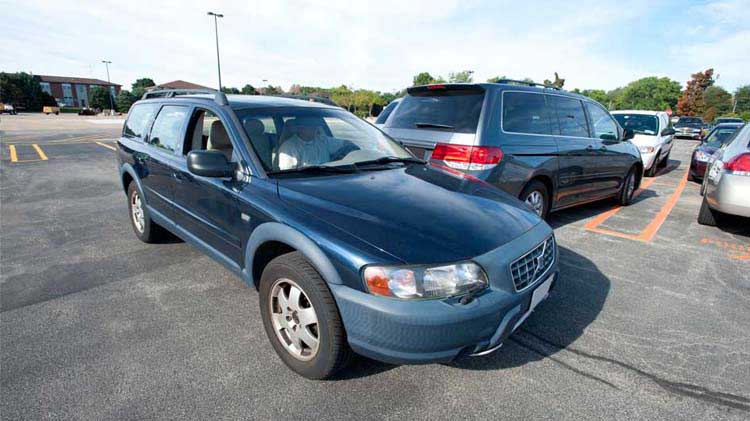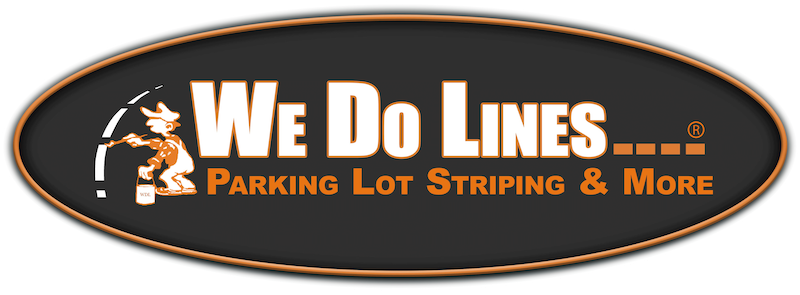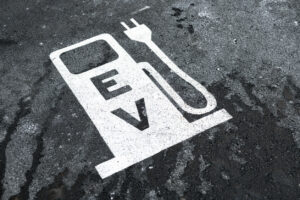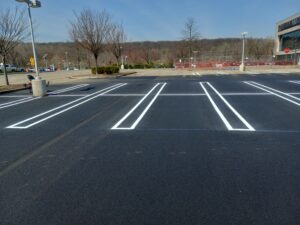Parking lots, though often considered mundane and unremarkable, are critical spaces where safety should always be a top priority. Amidst the hustle and bustle of vehicles maneuvering in and out, parking lot lines silently play the role of unsung heroes in accident prevention.
Section 1: Organization and Traffic Flow
The intricate dance of vehicles in a parking lot requires a well-choreographed plan, and parking lot lines are the stage upon which this organization unfolds. Clearly marked lanes direct traffic, ensuring a systematic flow that minimizes confusion and, consequently, the risk of collisions. The fundamental purpose of these lines is to bring order to the chaos, creating a structured environment where safety can thrive.

Section 2: Visibility and Signaling
The visual impact of parking lot lines extends beyond aesthetics; it is a crucial aspect of accident prevention. Bold, well-defined lines enhance visibility for both drivers and pedestrians. Vibrant colors catch the eye, signaling the intended paths of travel and highlighting areas where caution is required. Adequate visibility is a cornerstone in reducing the risk of accidents, especially in bustling parking lots where numerous vehicles and pedestrians coexist.
Section 3: Parking Space Allocation
The delineation of parking spaces through carefully marked lines is not just for aesthetics—it is a strategic move in preventing accidents. Well-defined spaces ensure that vehicles are parked within designated areas, reducing the likelihood of collisions, door dings, and obstructions to traffic flow. Adhering to these markings is crucial not only for maintaining order but also for preventing unnecessary congestion and potential hazards.

Section 4: Pedestrian Safety Zones
Parking lot lines are not solely for guiding vehicles; they also play a pivotal role in ensuring the safety of pedestrians. Designated crosswalks and walkways, clearly marked by lines, provide safe pathways for those on foot. This systematic approach minimizes the risk of accidents involving pedestrians and moving vehicles. By creating clear pedestrian safety zones, parking lot lines contribute to a safer coexistence between vehicular and foot traffic.
Section 5: Handicap Accessibility
An often-overlooked but critical aspect of parking lot safety is handicap accessibility. Parking lot lines are instrumental in designating spaces reserved for individuals with disabilities. These spots, marked with specific symbols and often featuring additional access aisles, are more than just a convenience—they are a necessity. Adherence to these markings is not only a legal requirement but an essential step toward creating an inclusive and safe environment for everyone.
Section 6: Preventing Conflicts and Congestion
Large parking lots, where vehicles are in constant motion, can become hotbeds for conflicts and congestion. Here, the role of parking lot lines is to prevent conflicts by guiding drivers efficiently. Well-marked lanes, clear exit and entrance points, and directional arrows all contribute to the prevention of conflicts. By minimizing confusion, impatience, and erratic movements within the parking lot, these lines play a crucial role in accident prevention.
Section 7: Emergency Vehicle Access
In times of emergencies, quick access is paramount. Parking lot lines are not just pathways for regular traffic; they also designate emergency vehicle access routes. Clear, unobstructed pathways ensure that first responders can navigate the parking lot swiftly and without hindrance. In emergency situations, adherence to these markings can make a significant difference in response times.

Section 8: Maintenance and Visibility
The efficacy of parking lot lines in accident prevention relies heavily on their visibility. Faded, worn-out markings can lead to confusion and compromise safety. Regular maintenance, including repainting and ensuring adequate contrast with the pavement, is essential to maximize the visibility of parking lot lines and uphold their safety functions.
Section 9: Driver Education and Awareness
Ultimately, the success of parking lot lines in accident prevention hinges on driver education and awareness. Understanding the significance of these markings and following them diligently is a responsibility that falls on every driver. By recognizing the role that parking lot lines play in safety and adhering to their guidance, drivers contribute to creating a safer environment for themselves and others.
Section 10: Community Responsibility
The safety of a parking lot is not solely the responsibility of individual drivers but extends to the community at large. Businesses and property owners must prioritize proper signage, well-maintained markings, and ongoing education about parking lot safety. By fostering a sense of community responsibility, we can collectively work towards creating parking lots that prioritize safety above all else.
Conclusion:
In the vast expanse of a parking lot, the unassuming lines beneath our wheels hold the key to accident prevention. From organizing traffic flow and delineating pedestrian pathways to providing accessibility and emergency vehicle access, parking lot lines are silent sentinels of safety. Adherence to these markings is not just a matter of compliance; it is a shared commitment to creating a secure environment for everyone. By recognizing the vital role of parking lot lines in accident prevention and fostering a culture of adherence and awareness, we can transform parking lots into spaces where safety truly comes first.




